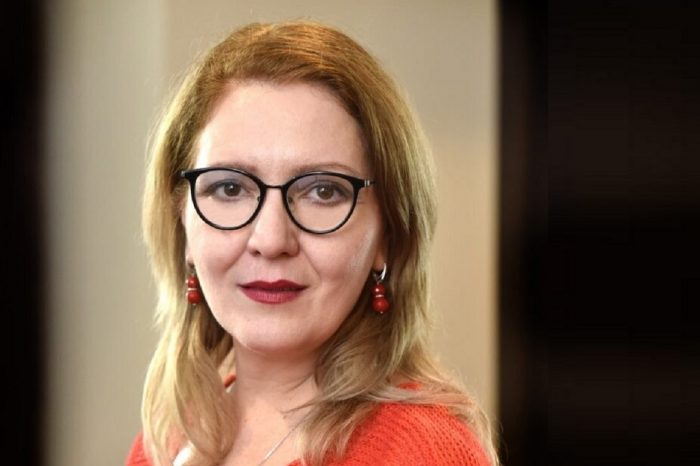Romania Has Europe’s highest digital growth potential, study says

Findings from a pan-European survey commissioned by global multi asset investment platform, eToro, published today shows Romania has the highest potential for digital growth in Europe.
The research, carried out in nine European countries by the Center for Economic and Business Research (Cebr) on behalf of eToro, looked at digital transformations taking place in sectors such as finance, health, retail, government and entertainment.
“Our future will be digital, whether we like it or not, and the vast majority agree that technology will make our lives easier,” said Yoni Assia, founder and CEO of eToro. “However, for the digital world to succeed we must not lose sight of the human element at the centre of this transformation, ensuring this new world is inclusive, moral and – ultimately – human,” he added.
Whilst the study shows Romania is currently the lowest ranked country in the eToro Digital Engagement Index, the country tops the list in terms of growth potential and its support for increased digitalisation across various sectors is second only to Poland’s. Overall, Romania ranks eighth in the Digital Transformation Index, above Italy.
“The results are not surprising given what we know about our lower Internet and digital services penetration, particularly in rural areas,” said dr. Cosmin Imbriscă, a data analysis lecturer at the University of Bucharest. “But there is change in the making – Internet access is growing, including in rural areas. We also see Romanians buying more devices that enable them to access the Internet and digital tools, such as smartphones, tablets and laptops,” Imbrișcă added.
Indeed, Romania scores third in the digital readiness indicator, suggesting that the necessary skills and public backing are in place to drive further digitalisation. The results show that while Romania is currently at a less mature stage of its digital transformation, the country has the potential to close this gap rapidly over the coming years.
Payments and ecommerce
In terms of shopping online, Romanians were also last in Europe, with the Danes topping the list. Romania was also near the bottom, just above Germany, when it came to using digital payment tools. The top country in digital payments was the United Kingdom.
“Romanians still predominantly use cash, but we have seen a rise in electronic payments in recent years, with national bank data showing that the POS’s has been growing, and Romanians now own about 14 million active cards,” Imbrișcă said.
Managing money online
When it comes to online investments, Romania is again last in the index, with Spain topping the list. Surveys show that most Romanians prefer to keep their money in current accounts, or in bank deposits.
However, things appear to be about to changing in this area as well, with Romanians ranking among the most enthusiastic when it comes to openness to new technologies, including in relation to finance, with 74% of Romanians supporting more digitalisation in this sector.
Indeed, other recent data shows that Romanians are increasingly interested in accessing the international financial markets, with eToro reporting last week an increase of 228% in the number of Romanians trading on its platform in the first nine months of 2020 compared to the same period in 2019.
Public administration
Another area where Romania is lagging behind its European counterparts is the use of online government services. According to the survey, Romanians are last when it comes to digital interaction for government services. However, 48% of Romanians are very comfortable with the idea of dealing with government institutions online, including for things like registering for government benefits, so the issue is the gatekeepers who control their availability.
“The government is slow in making new digital instruments available to move its dealings with the public online, and the existing ones, such as the Private Virtual Space, are cumbersome and have not been very successful in terms of adoption rate,” he added.
“With rapid growth of digital use during the pandemic, we expect some discomfort, especially when you are forced to rely solely on remote technology, especially in children’s education,” said dr. Cosmin Imbrișcă.

The Pandemic
The COVID-19 pandemic has accelerated digital transformation across Europe, with more than a third (36%) of all European survey respondents having increased their use of digital technologies outside of the workplace.
“From work to family, money to media, how we engage with almost everything in our lives has changed this year due to COVID-19, 2020 has been about digital acceleration,” said Yoni Assia, eToro’s CEO. “The world’s collective foot hit the pedal and within a few weeks people embraced technology that would otherwise have taken several years to become commonplace,” he added.
Conclusions: The future is digital, Romania poised for rapid progress, albeit from a low starting point
Romania displays a polarising set of results in the Digital Transformation Index, recording the lowest score in the Digital Engagement sub-Index as well as the highest score in the Digital Growth sub-Index. Romania’s level of economic development is lower than that of the other countries analysed. As a result, the provision of digital infrastructure and the public adoption of digital technologies is currently more limited than elsewhere in Europe.growth po
Indeed, Romania has the lowest score in seven out of the ten indicators that make up the Digital Engagement Index. However, Romania exhibits more potential for digital growth than any of the other eight countries. Romania’s support for increased digitalisation across various sectors is second only to Poland. Crucially, Romania also scores third in the digital readiness indicator, suggesting that the necessary skills and public backing are in place to drive further digitalisation. These results show that while Romania is currently at a less mature stage of its digital transformation, the country has the potential to close this gap rapidly over the coming years.













